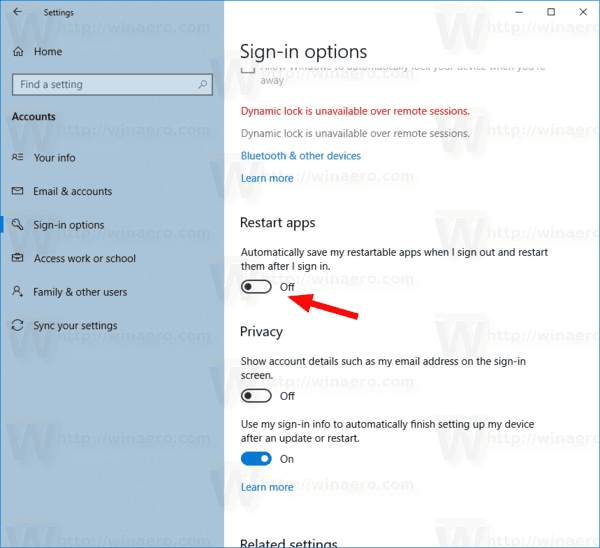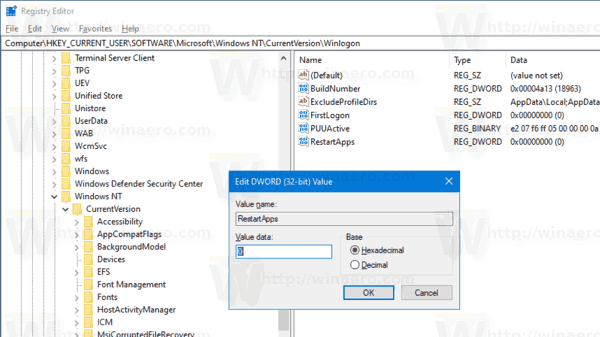How To Turn Off or On Automatically Restart Apps After Sign-In In Windows 10
Starting with Windows 10 Fall Creators Update, the operating system is able to automatically reopen apps which were running before shutdown or restart. This feature was regarded by many users as controversial, so Microsoft has finally added a separate option to prevent the OS from relaunching apps.
Advertisеment
If you are following Windows 10 development and articles on this blog, you might be familiar with all the changes done to Windows 10. One of them was the ability to re-launch all the running apps after restarting the OS once all the updates were installed. Starting with Windows 10 build 17040, there was an option, Use my sign in info to automatically finish setting up my device after an update or restart under Settings > User Accounts > Sign-in options. When it was disabled, it was supposed to stop Windows 10 from automatically restarting the apps.
However, this option was poorly explained and confused a lot of users. Also, it did not work as intended. When the option was disabled, it also prevented the OS from completing the installation of updates.
Finally, Microsoft has now separated that single option into two different switches. In addition to Use my sign in info to automatically finish setting up my device after an update or restart, Windows 10 includes a new option Automatically save my restartable apps when I sign out and restart them after I sign in. Here's how to use it.
To Turn Off Automatically Restart Apps After Sign-In In Windows 10,
- Open the Settings app.
- Go to Accounts -> Sign-in options.
- On the right, go to the Restart apps section.
- Turn off the option Automatically save my restartable apps when I sign out and restart them after I sign in.

- The option can be re-enabled at any moment later.
You are done.
Alternatively, you can apply a Registry tweak to disable or enable the 'Automatically Restart Apps after Sign In' feature in Windows 10. Do the following.
Turn Off Automatically Restart Apps After Sign-In with a Registry Tweak
- Open the Registry Editor app.
- Go to the following Registry key.
HKEY_CURRENT_USER\SOFTWARE\Microsoft\Windows NT\CurrentVersion\WinlogonSee how to go to a Registry key with one click. - On the right, modify or create a new 32-Bit DWORD value RestartApps.

Note: Even if you are running 64-bit Windows you must still create a 32-bit DWORD value.
Set its value data to 0 to disable the feature. - A value data of 1 will enable it.
To save your time, you can download these ready-to-use Registry files:
That's it!
For reference, check out the older articles related to the topic.
Support us
Winaero greatly relies on your support. You can help the site keep bringing you interesting and useful content and software by using these options:

Thanks for this solution. I was searching for this from the last 8 days. I have been facing this on my Lenovo G50-80 laptop. I got the solution in the first method. Thanks once again.
¿A partir de qué compilación aparece esa nueva opción en el Explorador de archivos?
From which build does this new option appear in File Explorer?
Starting in 18950
¿A partir de qué compilación aparece esa nueva opción?
From what compilation does this new option appear?
You must have the latest 20H1 build installed.